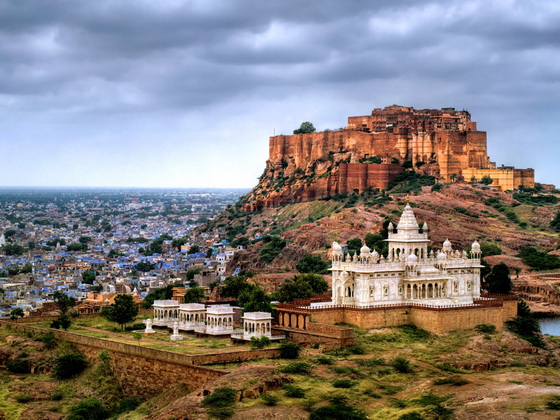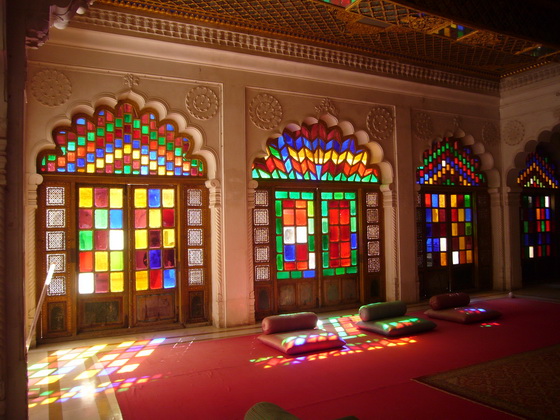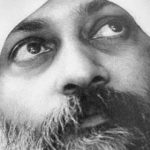Magic India is well and alive, says Videha after his latest visit during which he also participated in the 2017 World Sacred Music Festival in Jodhpur.
I have travelled in India countless times, and besides the Himalayas, an area I like and feel about a lot, is Rajasthan. Its silent deserts, its people and their history, its colors and lights, are definitely an essential part of the core and beauty of India.
It had been a long time since I had visited Rajasthan last. When I was invited by some long-time sannyasin friends last year to lead a Sufi group in Jodhpur, connecting it to the annual event of the World Sacred Music Festival in February 2017, I felt an immediate yes.
Jodhpur is an ancient town, in the heart of Rajasthan, close to the Thar desert in the West. Although large parts of the city can be likened to the usual chaotic, noisy, messy towns so common in India, the old city at the feet of the impressive and beautiful Mehrangarh Fort, still evokes the flavour and marvel of old times.
We were an international group of sannyasins and friends from Taiwan, Russia, Kazakhstan, Ukraine, Iran, Italy, Nepal, and India, and had arranged a three-day Sufi gathering in the beautiful house of our host, just outside of town. The Sufi group, with its focus on love, poetry, music, dance, and the courage of the heart, was beautiful in itself, and it was also the right background and preparation for the Sacred World Music Festival immediately following it.
What I felt, listened to, and watched many times during the festival was a space and dimension of transcendental beauty. Music can be a miracle, and certainly creates the magic… particularly old traditional music, something rooted in the fabric of life and sometimes in meditation, something that can be a vehicle of the mystics and the messenger of that which cannot be said.
Concerts started at 7.00 am with Rajasthani desert folk music. So moving, so touching… simple and straight from the heart and soul, to the heart and soul. What were they singing? Songs and poetry by Kabir and Meera! And those morning concerts were conducted in such ideal surroundings, at the feet of a magnificent white marble palace, a poetry in itself, on a small hill, at dawn, in the light rays of the rising sun.
A following Qawwali concert, the devotional Sufi music, was set under a huge tree, inside the Mehrangarh Fort. The songs a storm of love and devotion… what else?
In the early afternoon the arabesque melody of the Middle-Eastern oud and the delicate notes of the Chinese pipa lute filled the atmosphere in several of the fort’s gardens.
Later concerts unfolded on a floating platform on the water of a small lake… with the audience sitting at the bank, and birds flying overhead in the sunset light. One day it was an Iranian group, singing and playing Mevlana poetry; on another day Indian classical raga music was offered.
Inside the Mehrangarh Fort, in the evening, Mongolian singers joined a Rajasthani folk group… an explosion of overwhelming power and joy.
Parvhaty Baul, a solitary wild woman, dancing, playing, singing, whirling, the profound and ecstatic way of the Baul… powerful, beautiful, courageous.
The allover experience of the festival was overwhelming, and somehow unexpected. There were times when the eyes were brimming with tears of joy, times when the heart pounded in dance, times with gaps of silence…
I was very happy to find and experience this special dimension again, drinking from the living river of music, love, and devotion.
And as all this happened under the sky of meditativeness, then it was not difficult to understand this poem from Mevlana and remember:
Don’t worry about saving these songs!
And if one of our instruments breaks, it doesn’t matter.
We have fallen into the place
Where everything is music.
And even if the whole world’s harp should burn up,
There will still be hidden instruments playing.
The strumming and the flute notes
Rise into the atmosphere.
So if the candle flickers and goes out,
We have a piece of flint and a spark.
This singing art is sea foam.
The graceful movements come from a pearl
Somewhere on the ocean floor.
Poems reach up like spindrift
And the edge of driftwood along the beach, wanting!
They derive from a slow and powerful root
That we cannot see.
Stop the words now!
Open the window in the center of your chest,
and let the spirit fly in and out.
Thank you poets, musicians, singers, dancers… the torch was burning bright!
 Videha was born in Italy and at age 18 started travelling, mainly to the East. He was initiated into sannyas in 1980 and into the Mevlevi Sufi Order of Konya (the Whirling Dervishes) in 2002. Since more than 28 years he has been leading workshops, seminars, Zen and Sufi meditation camps and retreats all over the world. He is the author of a photo book on beauty called ‘Sundaram’, and two on Tibet, ‘Om Mani Padme Hum’, and ‘Tashi Delek’. oshomokurai.com
Videha was born in Italy and at age 18 started travelling, mainly to the East. He was initiated into sannyas in 1980 and into the Mevlevi Sufi Order of Konya (the Whirling Dervishes) in 2002. Since more than 28 years he has been leading workshops, seminars, Zen and Sufi meditation camps and retreats all over the world. He is the author of a photo book on beauty called ‘Sundaram’, and two on Tibet, ‘Om Mani Padme Hum’, and ‘Tashi Delek’. oshomokurai.com












Comments are closed.